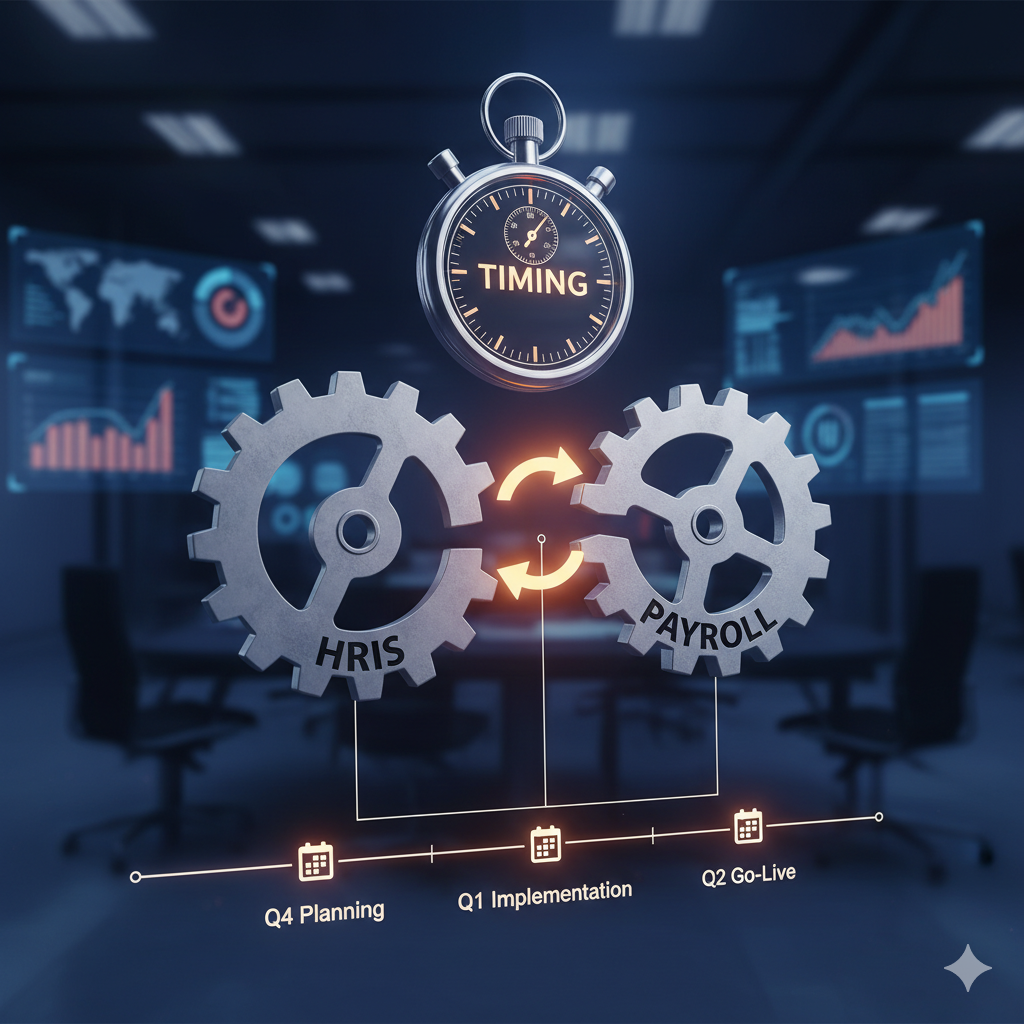Migrating to a new HRIS (Human Resource Information System) and payroll system is one of the most significant decisions an organization can make. The right solution can streamline HR operations, improve compliance, and save countless hours — but timing the migration is just as critical as choosing the software itself.
In this article, we’ll explore how to choose the right time to transition to a new HRIS and payroll system, along with expert tips to ensure a smooth, low-risk migration.
Why Migration Timing Matters
Many HR transformations fail not because of poor software, but because of poor timing. Migrating too soon or too late can disrupt payroll cycles, affect employee data accuracy, and delay business processes.
Key reasons timing matters:
- Payroll deadlines: Switching systems mid-cycle can cause errors or duplicate payments.
- Compliance updates: Aligning migration with tax year or fiscal year changes can minimize rework.
- Employee engagement: Avoid transitions during peak hiring, performance review, or open enrollment periods.
Pro tip: Always plan your migration during a low operational season — when HR and payroll teams can focus on testing and validation without high administrative pressure.
Identify the Right Time for Your Organization
Every company has a unique rhythm — from fiscal calendars to hiring seasons. The right migration window depends on understanding these operational patterns.
Best times to migrate HRIS and payroll systems:
- At the start of a new fiscal or calendar year: Simplifies year-end reporting and data reconciliation.
- After major organizational changes: For example, post-merger or restructuring, once employee data stabilizes.
- During a lull in HR activity: Periods with minimal onboarding or payroll changes reduce migration risks.
Avoid:
- End-of-year crunch periods
- Performance review or bonus cycles
- Government reporting or compliance deadlines
Assess Your Readiness Before Migration
Before locking in a migration date, assess your internal readiness. This step ensures your data, processes, and teams are aligned.
Migration readiness checklist:
✅ Clean and verify employee data (pay rates, tax info, benefits)
✅ Map old data fields to the new HRIS structure
✅ Train HR and payroll staff on the new system
✅ Communicate timelines to stakeholders and employees
✅ Plan for parallel runs (test payroll in both systems before go-live)
SEO tip: Many organizations search for “HRIS migration checklist” — including a checklist section like this helps boost your search visibility.
Coordinate with Vendors and Internal Teams
Your migration’s success depends on seamless collaboration between your HR team, payroll provider, and IT department.
Coordinate the following:
- Vendor timelines: Ensure your HRIS provider has the resources to support your go-live window.
- Data migration schedules: Set aside time for validation and parallel testing.
- Integration checks: Confirm connections with finance, benefits, and time tracking systems.
Pro tip: Build in a buffer of 2–4 weeks for unexpected issues — such as data discrepancies or integration errors.
Align Migration with Business Growth and Strategy
If your organization is expanding, upgrading systems isn’t just about technology — it’s about scalability.
Ask yourself:
- Will the new HRIS support your 1–3 year growth plans?
- Are you introducing new pay structures, remote work policies, or global payroll needs?
- Does your current system limit automation or reporting capabilities?
Migrating before these strategic shifts can ensure your system evolves with your business, not after it’s outgrown.
The Ideal HRIS Migration Timeline
A typical HRIS and payroll migration takes 3 to 6 months, depending on company size and data complexity. Here’s a sample timeline:
| Phase | Duration | Key Activities |
| Planning | 2–4 weeks | Assess readiness, set goals, choose vendor |
| Data Preparation | 3–6 weeks | Clean and map employee data |
| System Configuration | 4–8 weeks | Customize HRIS modules, set permissions |
| Testing | 3–5 weeks | Run test payroll, validate reports |
| Go-Live | 1 week | Launch new system and monitor closely |
| Post-Go-Live | 2–4 weeks | Address issues, finalize reporting |
Don’t Forget Change Management
Even the best-timed migration can fail without proper communication and training.
Best practices for smooth adoption:
- Involve key users early in testing and training.
- Communicate the benefits clearly to employees.
- Offer ongoing support post-migration.
Change management builds confidence — reducing errors, support tickets, and resistance to the new system.
Conclusion
Migrating to a new HRIS and payroll system can transform your organization’s efficiency and employee experience — but only if timed correctly. By planning your migration around operational cycles, preparing your data, and aligning teams and vendors, you can ensure a smooth, compliant, and successful transition.
Whether you’re upgrading outdated systems or scaling for growth, the right timing will turn your HRIS migration from a challenge into a competitive advantage.

